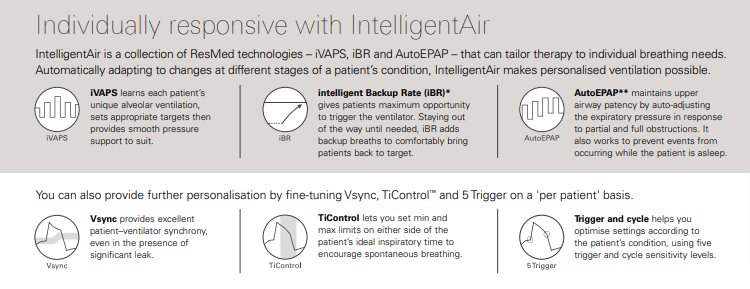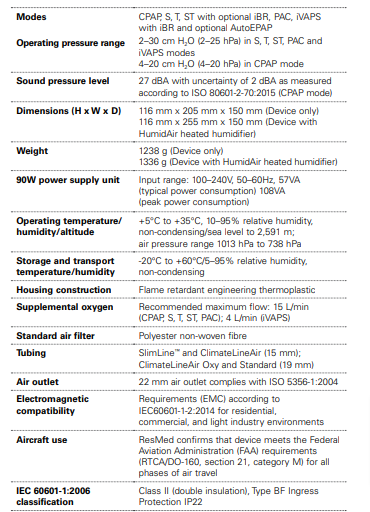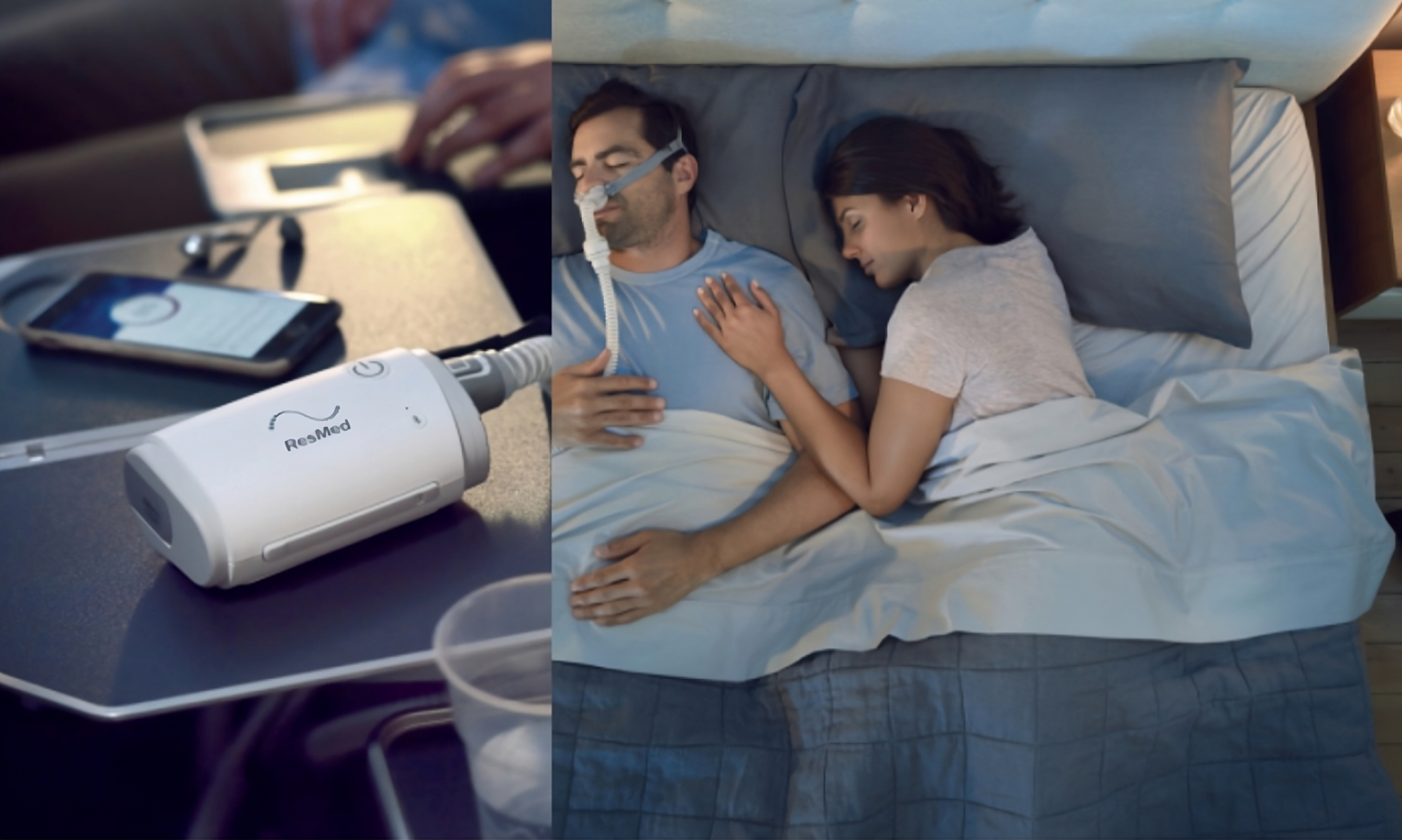Personalised ventilation made easy
Lumis 150 VPAP ST-A is a non-invasive ventilator with alarms designed for non-dependent patients with obstructive or restrictive respiratory conditions. Featuring ResMed’s unique volume-assurance mode – iVAPS (intelligent Volume-Assured Pressure Support) – Lumis 150 VPAP ST-A maintains target alveolar ventilation to suit each patient’s changing needs. And with an intelligent Backup Rate (iBR) and optional AutoEPAP, iVAPS continuously monitors ventilation and the upper airway to deliver personalised ventilation. Lumis 150 VPAP ST-A is also easy to set up and use, and features built-in wireless connectivity to AirView™ for remote patient management.


Key Features of Lumis 150 VPAP ST-A
QuickNav for low-touch therapy adjustment
By simply double-clicking the home button on the device, you can quickly and easily toggle between the Settings and Monitoring screens, so you can instantly check the impact of adjustments you make on the patient’s therapy.
Climate Control Auto for automatic humidification
When used with a HumidAir™ heated humidifier and ClimateLineAir™ or ClimateLineAir Oxy heated tube, Lumis delivers humidification automatically – no settings to change, and no complicated menus to navigate.
Ramp and Ramp Down for extra comfort
To help patients ease into a therapy session, the Ramp feature gradually and comfortably ramps the pressure up to their prescribed level. And to help ease them out of a therapy session, Ramp Down gradually reduces the EPAP and pressure support.
AirView for remote patient management
Your patients’ therapy data can be sent seamlessly and securely to AirView, where you can remotely access the most recent therapy statistics and trend data. AirView’s ‘remote assist’ and ‘remote settings’ changes also allow for easy and efficient device management.
Alarms for confidence and safety
A set of fixed and adjustable alarms is also available for extra reassurance, and to help you personalise therapy for your patients. Alarms that you can set are high leak, low minute ventilation, apnoea, non-vented mask and low Sp02 (when an oximeter is connected).
Technical Specifications

